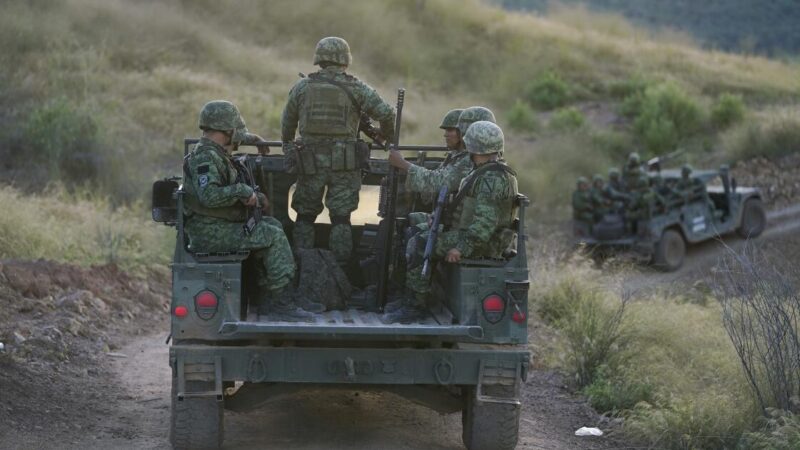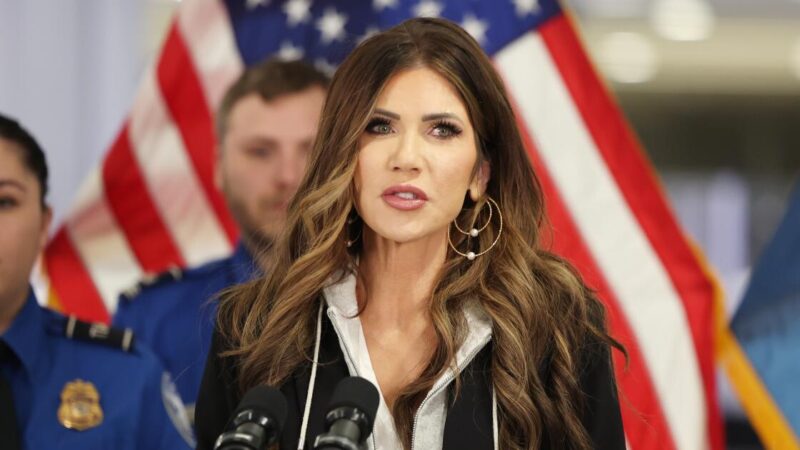Trump administration presses states on Colorado River water cuts
Negotiators for seven Western states are under mounting pressure to reach an agreement outlining how they plan to share the Colorado River’s dwindling water.
The Trump administration gave the states a Tuesday deadline to agree on the initial terms of a plan for cutting water use to prevent the river’s reservoirs from declining to dangerously low levels.
Because California uses more Colorado River water than any other state, it will play a central role in any deal to take less from the river.
“California is committed to being constructive at the table, advancing ideas and solutions to be able to get us to sustainability and avoid conflict,” said J.B. Hamby, California’s Colorado River commissioner. “What it takes now is folks to be able to roll up their sleeves and make tough decisions and compromises.”
Representatives of the seven states where cities and farms depend on the river have been meeting regularly over the last two years trying to come up with a plan for addressing water shortages after 2026, when the current rules expire.
Persistent disagreements have pitted the three states of the river’s lower basin — California, Arizona and Nevada — against the four upper-basin states — Colorado, Utah, Wyoming and New Mexico. They disagree not only on whose water should be cut, and how much, but also over how much water should be released from Lake Powell, a key reservoir upstream from the Grand Canyon.
Officials representing the states and the federal government are scheduled to hold another round of talks Monday and Tuesday. As with other negotiating sessions, where they are meeting is kept secret.
The Colorado River provides water for cities from Denver to San Diego, 30 Native tribes and farming communities from the Rocky Mountains to northern Mexico. The Colorado has long been overused, with so much water taken out that for decades the river has seldom met the sea, transforming once-vast wetlands in Mexico into stretches of dry sand.
The river’s reservoirs have declined dramatically amid unrelenting dry conditions over the last quarter-century, leaving the manmade lakes far below a coating of whitish minerals on rocks, where water once lapped.
Scientists found that the last 25 years likely have been the driest quarter-century in 1,200 years. And research has shown that the warming climate, driven largely by the use of fossil fuels, has intensified the long stretch of mostly dry years.
Lake Mead, the river’s largest reservoir, is now just 31% full. And Lake Powell, the river’s second-largest reservoir, is at 29% of capacity.

The Colorado River provides water for cities from Denver to San Diego, 30 Native tribes and farming communities from the Rocky Mountains to northern Mexico.
(Matt York / Associated Press)
The Trump administration, through the Interior Department and the U.S. Bureau of Reclamation, operates the giant dams along the river.
Participants in the talks say federal officials gave them a Nov. 11 deadline to agree on key principles in several areas. The Trump administration hasn’t publicly spelled out what it will do if the states fail to reach a consensus.
A spokesperson for the Interior Department said in an email that “we remain focused on achieving a seven-state agreement” that would “maximize flexibility and cooperation in managing the Colorado River and best serve the 40 million people who depend on it.”
Without a consensus among the states, the government’s “options would be more limited and less beneficial than what could be achieved through a collaborative approach,” the spokesperson said. “We are optimistic that, through continued collaboration and good-faith efforts, the seven states can develop the level of detail and consensus needed to meet the initial November deadline.”
Research has shown that the Colorado River has lost about 20% of its flow since 2000.
Over the last few years, as reservoirs have declined, the states have negotiated short-term stopgap deals to reduce water use, including a three-year pact adopted in 2023.
As part of the water-saving efforts, farmers in California’s Imperial Valley are temporarily leaving some hay fields parched and fallow in exchange for cash payments. Cities also have been using less water. Even as the population of the Southwest has grown, water use has declined.
California is expected to use less Colorado River water this year than any year since 1949, according to the state’s Colorado Board. That’s thanks to the state’s long-term efforts and investments prioritizing conservation, said Hamby, the river commissioner.
“It sets a great example that you can do with less — and even do more with less,” he said. “It certainly demonstrates what’s possible all throughout the basin.”
Yet tensions have continued to simmer among the states. Some have said the disagreements could lead to lawsuits, but they hope to avoid a legal battle with an uncertain outcome.
“We are truly running out of time,” Hamby said. “What we need at this point is the willingness and effort to do more than any of us would like to do, but avoid the worst outcomes, which would come as a result of conflict.”

Lake Mead, the river’s largest reservoir, shown last year, is now just 31% full.
(Julia Demaree Nikhinson / Associated Press)
On Wednesday, Arizona Gov. Katie Hobbs strongly criticized the officials representing the four upper-basin states, saying they are taking an “extreme negotiating position.” Hobbs said the states, led by Colorado, “continue to run down the clock.”
“As we approach critical deadlines, we need the Trump administration to step in, exert leadership and broker a deal,” Hobbs said in the Arizona Daily Star.
A spokesperson for Becky Mitchell, Colorado’s top negotiator, said the upper-basin states are “fully participating and ready to do their part in any agreement.”
The states have been positioning themselves to argue in court, said Sarah Porter, director of Arizona State University’s Kyl Center for Water Policy.
“The negotiators, I think, have tried really, really hard, and sometimes it may just not be possible to come to an agreement,” Porter said.
There still may be room to reach a consensus, she said, but if they fail, “we are very, very likely to be in a situation where the states are in court.”





